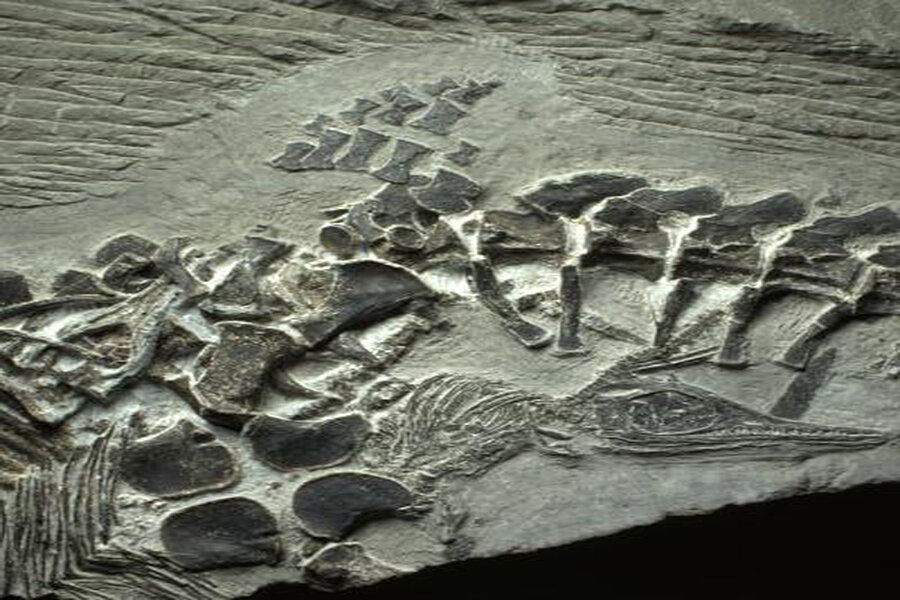Fossil shows mother reptile in act of giving live birth, say scientists
Loading...
The very moment of the birth of a newborn has been preserved for millions of years, shedding new light on the origins of live birth.
A 248 million-year-old fossil of a marine reptile called Chaohusaurus shows the reptile giving birth to its offspring. Chaohusaurus is a member of a bigger group of reptiles called Ichthyosaurs.
One of its embryo was still inside the mother reptile, another was coming out of the pelvis with half its body still inside the mother reptile and the third baby reptile was found outside of the mother, according to a press release from the journal PLOS ONE, which published the findings in a paper titled "Terrestrial Origin of Viviparity in Mesozoic Marine Reptiles Indicated by Early Triassic Embryonic Fossils."
The skeleton of the mother reptile indicated that she had been delivering her offspring live from her womb. Moreover, a headfirst birth posture of the second baby reptile coming out from the pelvis suggests that live-birth is not an aquatic adaptation, Ryosuke Motani from the University of California, Davis, lead author of the paper told the Monitor.
This specimen, which scientists are calling the oldest known fossil of a live birth, suggests that live birth among air-breathers evolved on land and not in the sea, he adds.
The Ichthyosaur's ancestors lived on land, used lungs to breathe, and gave birth to their young ones head first. So when Ichthyosaurs evolved and invaded the sea, they continued giving birth to live young ones headfirst, Dr. Motani says. This fossil challenges the conjecture that live birth among marine animals was an aquatic adaptation.
But later on, Ichthyosaurs evolved a tail-first birth posture as seen in whales and sea cows, he says.
A tail-first birth posture is associated with most marine animals because if the head comes out first, there is a possibility that the babies could asphyxiate. But there are some marine newborns that are expelled headfirst, says Motani.
"These cases may be exceptions but nevertheless establish that headfirst birth in water is possible even in air-breathers. Therefore, the caudad skull orientation of embryonic Chaohusaurus does not necessarily suggest birth on land, especially if this mother died in labor underwater as preservational evidence suggests," according to the paper.
Ichthyosaurs were initially lizard shaped. Their with front and back legs eventual evolved into flippers to adapt to their marine habitat. Later on, these ocean monsters that lived and survived the extinction of the Triassic era – that started 251 million years ago and ended at to 201 million years ago – acquired a dolphin-shaped body, Motani says.






